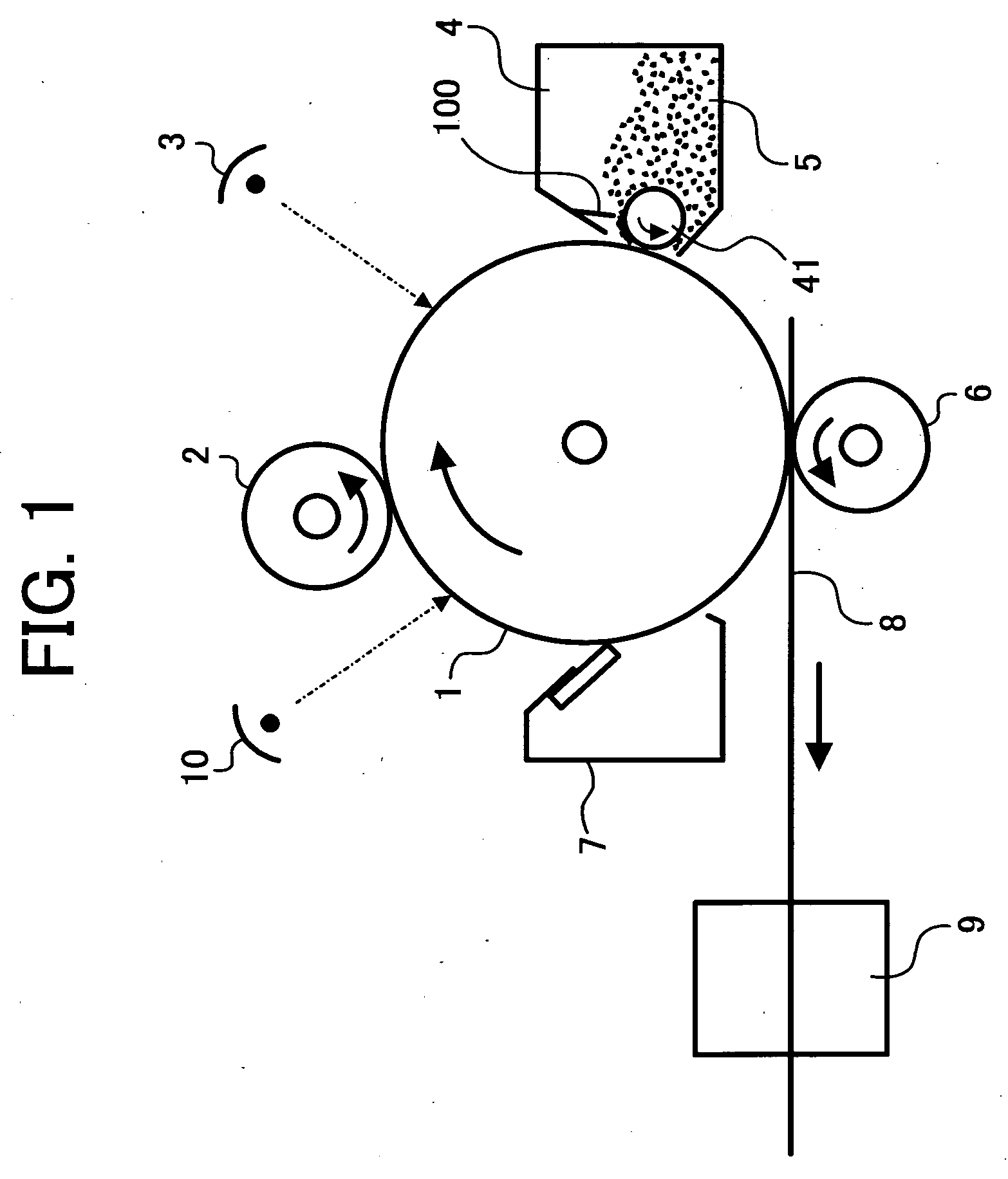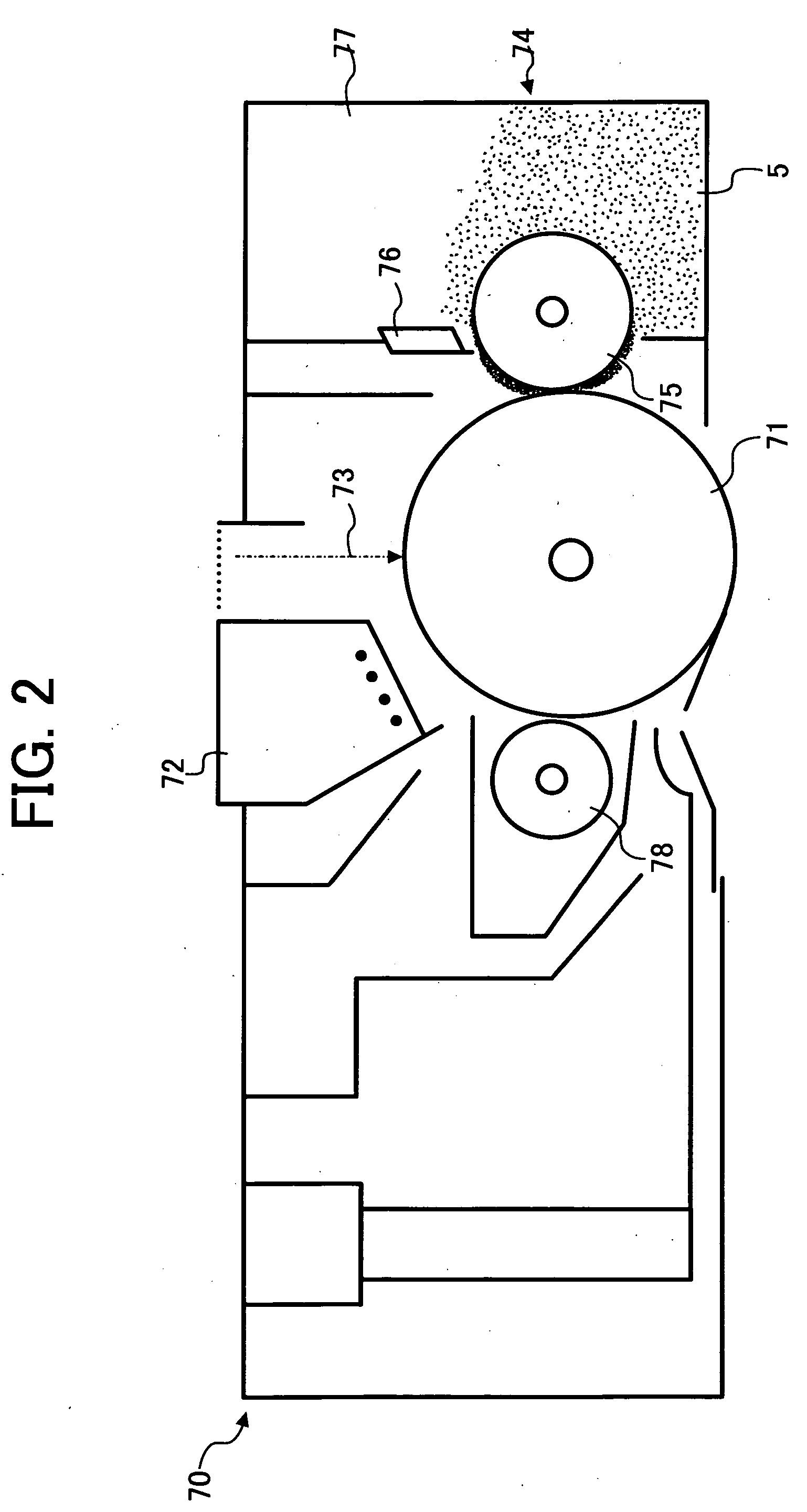Toner for forming image, developer including the toner, method for preparing the toner, and image forming method and apparatus and process cartridge using the toner
a technology for forming images and toners, which is applied in the field of toner for forming images, developer including toners, method for preparing toners, and image forming methods and apparatus and process cartridges using toners, which can solve the problems of serious decrease in the yield of toners in the classification process, limited raw materials used for preparing toners, and brittleness of kneaded mixtures, etc., to achieve good combination of charging ability, development ability
- Summary
- Abstract
- Description
- Claims
- Application Information
AI Technical Summary
Benefits of technology
Problems solved by technology
Method used
Image
Examples
manufacturing example 1
[0260] In a reaction vessel equipped with a stirrer and a thermometer, 683 parts of water, 11 parts of a sodium salt of sulfate of an ethylene oxide adduct of methacrylic acid (ELEMINOL RS-30 from Sanyo Chemical Industries Ltd.), 83 parts of styrene, 83 parts of methacrylic acid, 110 parts of butyl acrylate, and 1 part of ammonium persulfate were mixed. The mixture was agitated for 15 minutes while the stirrer was rotated at a revolution of 400 rpm. As a result, a milky emulsion was prepared. Then the emulsion was heated to 75° C. to react the monomers for 5 hours.
[0261] Further, 30 parts of a 1% aqueous solution of ammonium persulfate were added thereto, and the mixture was aged for 5 hours at 75° C. Thus, an aqueous dispersion of a vinyl resin (i.e., a copolymer of styrene / methacrylic acid / butyl acrylate / sodium salt of sulfate of ethylene oxide adduct of methacrylic acid, hereinafter referred to as particulate resin dispersion (1)) was prepared.
[0262] The volume average particle...
manufacturing example 2
[0263] In a reaction vessel equipped with a stirrer, 990 parts of water, 83 parts of the particulate resin dispersion 1 prepared above, 37 parts of an aqueous solution of a sodium salt of dodecyldiphenyletherdisulfonic acid (ELEMINOL MON-7 from Sanyo Chemical Industries Ltd., solid content of 48.5%), and 90 parts of ethyl acetate were mixed while agitated. As a result, a milky liquid (hereinafter referred to as an aqueous phase liquid 1) was prepared.
Preparation of Unmodified Polyester Resin
manufacturing example 3
[0264] The following components were contained in a reaction container equipped with a condenser, a stirrer and a nitrogen feed pipe to perform a polycondensation reaction for 8 hours at 230° C. under normal pressure.
Ethylene oxide (2 mole) adduct of229 partsbisphenol APropylene oxide (3 mole) adduct of529 partsbisphenol ATerephthalic acid208 partsAdipic acid 46 partsDibutyltin oxide 2 parts
[0265] Then the reaction was further continued for 5 hours under a reduced pressure of from 10 to 15 mmHg.
[0266] Further, 44 parts of trimellitic anhydride were fed to the container to be reacted with the reaction product for 2 hours at 180° C. Thus, an unmodified polyester resin 1 was prepared. The unmodified polyester resin 1 has a number average molecular weight of 2500, a weight average molecular weight of 6700, a glass transition temperature (Tg) of 43° C. and an acid value of 25 mgKOH / g.
Synthesis of Intermediate Polyester
PUM
| Property | Measurement | Unit |
|---|---|---|
| acid value | aaaaa | aaaaa |
| acid value | aaaaa | aaaaa |
| acid value | aaaaa | aaaaa |
Abstract
Description
Claims
Application Information
 Login to View More
Login to View More - R&D
- Intellectual Property
- Life Sciences
- Materials
- Tech Scout
- Unparalleled Data Quality
- Higher Quality Content
- 60% Fewer Hallucinations
Browse by: Latest US Patents, China's latest patents, Technical Efficacy Thesaurus, Application Domain, Technology Topic, Popular Technical Reports.
© 2025 PatSnap. All rights reserved.Legal|Privacy policy|Modern Slavery Act Transparency Statement|Sitemap|About US| Contact US: help@patsnap.com



